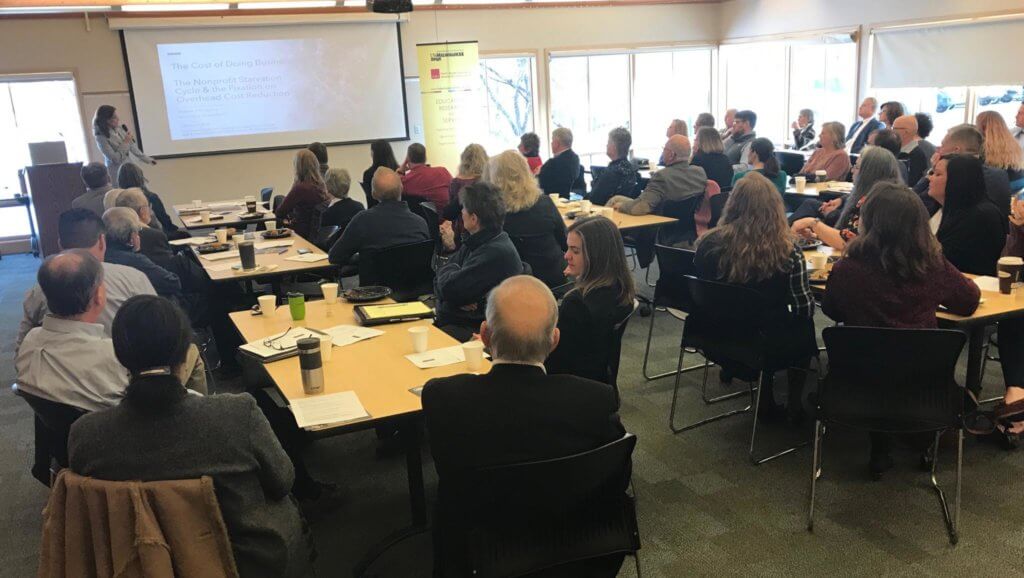Busting the Overhead Myth
February 5, 2020
 | By Jamie Schloegel, Chief Executive Officer |

Lots of great trends started in the 80s that we still enjoy today: scrunchies, ugly Christmas sweaters, high-waisted jeans, spandex, and more!
Unfortunately for the nonprofit sector, one trend that started in the 80s has spent the last forty years eroding the already shaky funding stream for charities. The overhead myth, or the belief that a nonprofit’s overhead budget must be minimal in order to be effective, has caused a sharp and continuing decrease in overhead expenses among US nonprofits since 1985.
Overhead costs refer to expenses like accounting fees, salaries and fundraising costs; expenses not directly related to programs. A decrease in spending on overhead costs means the people running nonprofits are forced to make difficult cuts that could impede their impact. This “starvation cycle” results in chronic under-funding for even the most effective organizations.
To help break that cycle, LCF partnered with Great Rivers United Way and the Helen Bader Institute for Nonprofit Management to host a seminar for local donors yesterday. Elizabeth Searling, PhD, co-author of “Anatomy of the Nonprofit Starvation Cycle” and a starvation cycle researcher at Rockefeller University presented about the starvation cycle and funders’ continued fixation on overhead costs. She also shared new ways to measure local nonprofit impact. More than 60 local philanthropists and nonprofit executives attended the event.
The main takeaways from the event are as follows:
- Deciding which nonprofits to support based on their overhead cost ratio perpetuates the nonprofit starvation cycle, making nonprofits less effective.
- Instead, we should make funding decisions based upon the impact and mission of nonprofits. I’m gonna insert a little plug for LCF here: We’re all busy folks, and it might not be possible to always keep up with which nonprofits are doing what, and who’s making the biggest impact. It’s our job at LCF to know these things, and we’re happy to offer our consulting services to anyone who wants to ensure their gifts are supporting real impact in our community.
Here’s another way to look at this… as consumers, we decide to make purchases based on the products we love or believe will work for us. For example, I buy coffee at my favorite local coffee shop because I believe in the impact that caffeine will have on my mood for most of the morning. I don’t ask questions about how much of the cost of that cup was spent on paying an accountant to do payroll. I make my charitable giving choices in the same fashion; I invest in nonprofits whose mission I’m proud to support and I don’t worry about how much said nonprofit has to pay for an audit.
If we all agree to shift our focus from overhead to impact, we can ensure our hardworking nonprofits are healthy and helping our beloved river town thrive. Then, we can put an end to this 80s trend (hopefully along with spandex and scrunchies).
